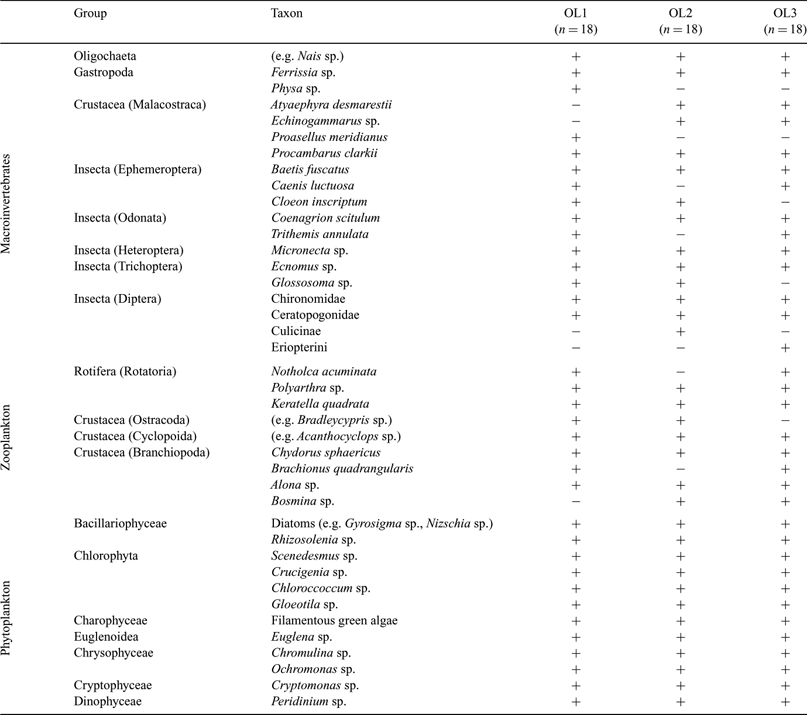Modelling the response of floodplain aquatic assemblages across the lateral hydrological connectivity gradient
B. Gallardo A C , S. Gascón B , M. González-Sanchís A , A. Cabezas A and F. A. Comín AA Pyrenean Institute of Ecology – Spanish Council of Science, Avda. Montañana 1005, 50192 Zaragoza, Spain.
B Institute of Aquatic Ecology – Faculty of Sciences, University of Girona 17071, Girona, Spain.
C Corresponding author. Email: belinda@ipe.csic.es or galla82@hotmail.com
Marine and Freshwater Research 60(9) 924-935 https://doi.org/10.1071/MF08277
Submitted: 2 October 2008 Accepted: 24 February 2009 Published: 22 September 2009
Abstract
Hydrological connectivity is one of the main controlling factors of habitats and aquatic assemblages on river floodplains. Nevertheless, the lack of universal measures of river–floodplain connectivity (i.e. the lateral hydrological connectivity, LHC) limits the comparison of the response of aquatic assemblages to hydrological connectivity and impedes the understanding of floodplain functioning across different systems. To address these needs, we tested the ability of six different LHC surrogates to model changes in richness, abundance and composition of aquatic assemblages across a Mediterranean floodplain (Ebro River, NE Spain). As shown by generalised additive models, LHC surrogates explained 15% to 65% of the richness and abundance of aquatic assemblages. Zooplankton, macroinvertebrates and phytoplankton showed overlapping peaks of richness at flood duration rates of 5, 15 and 30 days year–1 respectively. Redundancy analyses showed that LHC surrogates explained 17% to 37% of aquatic assemblage composition. Distance to the river and flood duration were the most important determinants of macroinvertebrate composition, whereas flood magnitude and water-level variability best accounted for the variance in zooplankton and phytoplankton compositions. Models based on LHC surrogates such as those presented here can help in predicting the consequences of restoration measures and may be useful in setting restoration goals for aquatic assemblages.
Additional keywords: flood duration, generalised additive model, macroinvertebrates, phytoplankton, rarefied richness, redundancy analysis, zooplankton.
Acknowledgements
This study was supported by the Spanish Ministry of Education (MEC CGL2005-07059-C02-01) and Department of Environment–Aragon Government, with additional support for B.G. from the Aragon Government (B061 2005 pre-doctoral grant), to A.C. from the Spanish Scientific Council (I3P pre-doctoral grant) and to M.G.-S. from the Spanish Ministry of Education (FPI pre-doctoral grant). Xavier Quintana, Jordi Sala, Dani Boix and Stéphanie Gascóon helped with organism identification and the author is specially grateful to them for their contribution. Thanks are extended to Andrew Boulton and two anonymous referees for their helpful suggestions that have increased the quality of this paper.
Amoros, C. , and Bornette, G. (2002). Connectivity and biocomplexity in waterbodies of riverine floodplains. Freshwater Biology 47, 761–776.
| Crossref | GoogleScholarGoogle Scholar |
Paillex, A. , Castella, E. , and Carron, G. (2007). Aquatic macroinvertebrate response along a gradient of lateral connectivity in river floodplain channels. Journal of the North American Benthological Society 26, 779–796.
| Crossref | GoogleScholarGoogle Scholar |
Reckendorfer, W. , Baranyi, C. , Funk, A. , and Schiemer, F. (2006). Floodplain restoration by reinforcing hydrological connectivity: expected effects on aquatic mollusc communities. Journal of Applied Ecology 43, 474–484.
| Crossref | GoogleScholarGoogle Scholar |
Tockner, K. , Schiemer, F. , and Ward, J. V. (1998). Conservation by restoration: the management concept for a river–floodplain system on the Danube River in Austria. Aquatic Conservation: Marine & Freshwater Ecosystems 8, 71–86.
| Crossref | GoogleScholarGoogle Scholar |

Tockner, K. , Pennetzdorfer, D. , Reiner, N. , Schiemer, F. , and Ward, J. V. (1999a). Hydrological connectivity, and the exchange of organic matter and nutrients in a dynamic river–floodplain system (Danube, Austria). Freshwater Biology 41, 521–535.
| Crossref | GoogleScholarGoogle Scholar |

Tockner, K. , Schiemer, F. , Baumgartner, C. , Kum, G. , and Weigand, E. , et al. (1999b). The Danube restoration project: species diversity patterns across connectivity gradients in the floodplain system. Regulated Rivers: Research and Management 15, 245–258.
| Crossref | GoogleScholarGoogle Scholar |

Tockner, K. , Malard, F. , and Ward, J. V. (2000). An extension of the flood pulse concept. Hydrological Processes 14, 2861–2883.
| Crossref | GoogleScholarGoogle Scholar |

Usseglio-Polatera, P. , and Beisel, J. N. (2002). Longitudinal changes in macroinvertebrate assemblages in the Meuse River: anthropogenic effects versus natural change. River Research and Applications 18, 197–211.
| Crossref | GoogleScholarGoogle Scholar |

Van den Brink, F. W. B. , and Vandervelde, G. (1994). Impact of hydrology and water chemistry on floodplain lake communities along the Lower Rhine and Meuse. Water Science and Technology 29, 57–60.

Van den Brink, F. W. B. , Vankatwijk, M. M. , and Vandervelde, G. (1994). Impact of hydrology on phytoplankton and zooplankton community composition in floodplain lakes along the Lower Rhine and Meuse. Journal of Plankton Research 16, 351–373.
| Crossref | GoogleScholarGoogle Scholar |

Wantzen, K. M. , Junk, W. J. , and Rothhaupt, K. O. (2008). An extension of the flood–pulse concept (FPC) for lakes. Hydrobiologia 613, 151–170.
| Crossref | GoogleScholarGoogle Scholar |

Ward, J. V. , Tockner, K. , and Schiemer, F. (1999). Biodiversity of floodplain river ecosystems: ecotones and connectivity. Regulated Rivers: Research and Management 15, 125–139.
| Crossref | GoogleScholarGoogle Scholar |

Wellborn, G. A. , Skelly, D. K. , and Werner, E. E. (1996). Mechanisms creating community structure across a freshwater habitat gradient. Annual Review of Ecology and Systematics 27, 337–363.
| Crossref | GoogleScholarGoogle Scholar |

Whiles, M. R. , and Goldowitz, B. S. (2005). Macroinvertebrate communities in Central Platte River wetlands: patterns across a hydrologic gradient. Wetlands 25, 462–472.
| Crossref | GoogleScholarGoogle Scholar |

Wood, S. N. (2008). Fast stable direct fitting and smoothness selection for generalized additive models. Journal of the Royal Statistical Society. Series B, StatisticalMethodology 70, 495–518.
| Crossref | GoogleScholarGoogle Scholar |

Woodward, G. , and Hildrew, A. G. (2002). Food web structure in riverine landscapes. Freshwater Biology 47, 777–798.
| Crossref | GoogleScholarGoogle Scholar |


|


